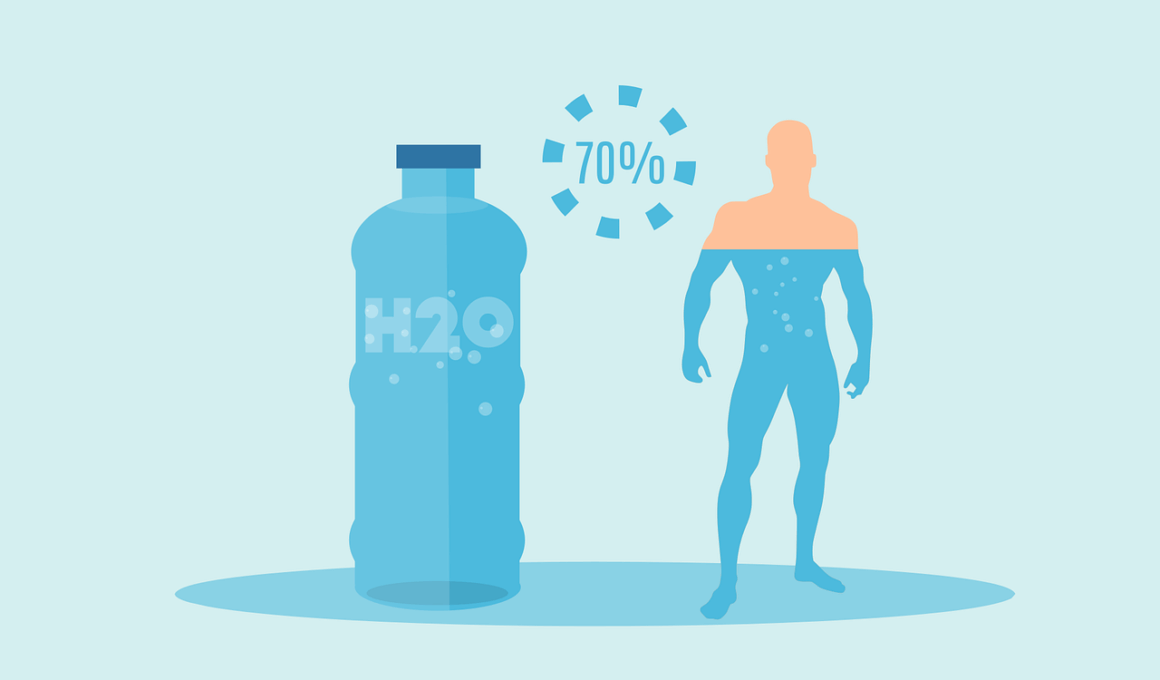Cold Weather Hydration: What You Need to Know
Hydration is often overlooked in the colder months, yet it remains essential for maintaining optimal health and preventing various ailments. When temperatures drop, people are less inclined to drink water as they don’t feel thirsty. This is due to our bodies’ natural responses to cold which reduce the sensation of thirst. However, dehydration can still occur. The dry air during winter and low humidity can lead to fluid loss through respiration. Additionally, indoor heating can further deplete our hydration levels. Ensuring we stay well-hydrated helps maintain energy levels, keeps our skin healthy, and supports our immune systems. To combat dehydration during winter, it’s vital to be proactive in sipping fluids regularly. Aim for at least eight glasses of water daily, or more if you’re active. Remember, hot beverages can also contribute to your water intake. Herbal teas or warm lemon water can be refreshing alternatives. Don’t forget about hydrating foods too, such as soups, stews, and fruits like oranges or watermelons which yield significant hydration benefits during colder months.
Identifying Symptoms of Dehydration
Recognizing the symptoms of dehydration is crucial, particularly in winter when it may sneak up on you. Common early signs include dry mouth and increased thirst. Other indications involve decreased urine output, fatigue, headaches, and dizziness. Even slight dehydration can affect mood and cognitive abilities, leading to irritability and difficulty concentrating. During colder weather, the body may not show typical signals, yet the symptoms can still develop insidiously. Pay attention to how your body feels throughout the day. Darker urine is a clear indicator that hydration levels need attention. If you notice any of these symptoms, increase your fluid intake immediately. Consider consuming electrolyte-rich beverages if active or exposed to prolonged winter activities. It’s often recommended to opt for beverages that are hydrating but also nutritious. For example, coconut water offers a refreshing taste alongside beneficial electrolytes. Keeping track of your hydration, especially when exercising in colder conditions, is paramount. Being aware of these symptoms allows for timely intervention, ensuring you can continue to enjoy winter activities without the adverse effects of dehydration.
When planning outdoor activities in cold weather, it’s essential to consider your hydration strategy. Hydration should be a part of your routine, just like dressing appropriately for the cold. Always pack water, even if you don’t think you need it. This is particularly important during activities like skiing, snowboarding, or hiking, where increased exertion often leads to greater fluid loss. To enhance your hydration, try to consume warm beverages before and after activities. Hot chocolate, tea, or even broth can make a significant difference, not just hydration-wise but also as a comfort during chilly weather. Carry a thermos to keep drinks warm and enjoyable. Of course, it’s best to hydrate before you feel thirsty. Set reminders or check in with yourself regularly to ensure that you’re drinking enough. Additionally, try to incorporate hydrating foods into your meals when on the go, such as sandwiches with lettuce and tomatoes. Understanding the importance of hydration during these activities will help maintain energy levels and enhance overall performance.
Hydration Strategies for Winter
Implementing effective hydration strategies in winter can make all the difference in how you feel. Set a routine for drinking water, aiming for a glass every couple of hours. You can also utilize flavored water to make it more appealing. Adding slices of fruits like lemon, lime, or berries can elevate your drink and encourage you to consume more. Additionally, keep a reusable water bottle handy, maybe one that’s insulated to keep your drinks warm. Investing in a water bottle designed to maintain temperature can help. Besides plain water, include a variety of hydrating beverages in your daily routine. Warm herbal teas are not only comforting but also a great way to hydrate without the need for cold drinks. Aim for at least three cups of tea daily, ideally caffeine-free to avoid dehydration. Keep in mind that foods high in water content, such as soups, can also be part of your hydration strategy. A hearty vegetable soup can both hydrate and provide nourishment, making it an excellent choice for chilly days. Aim to integrate these strategies into daily life to maintain consistent hydration.
Additionally, be aware of your alcohol intake during winter. Alcohol can lead to increased dehydration and worsen the symptoms associated with cold weather. If consuming alcoholic beverages, always accompany them with water. It is wise to establish a hydration plan before heading out to social events where alcohol is served. Alternate between alcoholic drinks and water, which keeps you hydrated, helps avoid hangovers, and ensures you feel your best. Fresh fruit juice can also provide hydration and be a healthier alternative to sugary alcoholic beverages. On cold days, winter cocktails made with fruit juice, sparkling water, or herbal infusions can be a delightful substitute. Remember to enjoy yourself while being conscious of hydration. Listen to your body’s signals and ensure to rehydrate adequately after social gatherings or after a long day outdoors. Prevention is key to avoiding the fatigue and other complications of prolonged neglect of hydration. During winter escapades, make hydration a priority to enjoy the season fully.
Hydrating with Nutrition
Your dietary choices play a significant role in your hydration status during cold weather. Incorporating water-rich foods into your meals is an excellent way to ensure hydration. Foods like cucumbers, lettuce, and bell peppers have high water content and can significantly contribute to your daily fluid intake. Stews and soups are perfect for combating cold temperatures while keeping you hydrated too. Opt for hearty recipes that employ plenty of vegetables and a base made from broth. Ideally, they should be warm to promote comfort and hydration. Remember, fruits like oranges, apples, and even bananas can offer hydration benefits and can be easily added to your snacks or meals. A smoothie made with leafy greens and some of these fruits is not just hydrating but boosts your vitamin and mineral intake during the season. Don’t overlook the importance of protein sources that are also hydrating, such as yogurt or cottage cheese, ideal for winter breakfasts. This balance of nutrition not only supports hydration but also overall health, making for a great winter dietary strategy.
Finally, staying informed about hydration recommendations can keep awareness alive. Several organizations advocate for hydration as a fundamental aspect of health, with tailored guidelines for various environments. This knowledge is especially valuable during the winter months when hydration needs change. Seasonal variations in hydration needs may not be commonly discussed, but they can significantly influence how individuals feel and perform. Maintaining open communication about hydration can be beneficial, whether in families, schools, or workplaces. Encourage others to drink water regularly in winter activities, just as they do in summer outings. Despite the cold, hydration should be a shared concern and not overlooked. Consider initiating group challenges or fun hydration tips in community forums or online platforms. By fostering awareness and creating healthy hydration habits, we can improve well-being throughout winter. Not only will you benefit from healthier hydration choices, but your community can thrive as well. Focus on hydration as an essential component of cold weather productivity and health.


